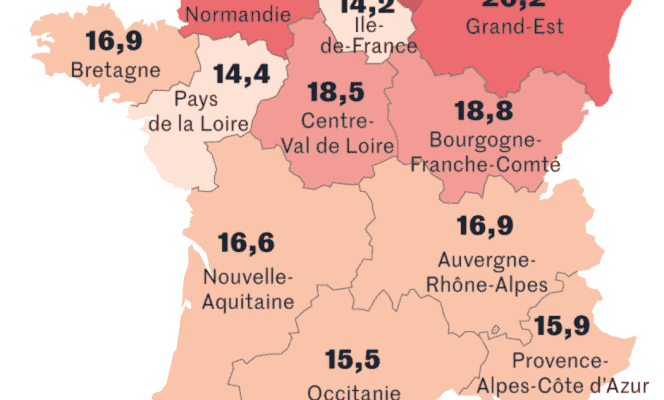The World Health Organization does not hesitate to call it“Epidemic”, its progress on a global scale is so dazzling, but in France, obesity is difficult to define. Not being recognized as a chronic disease, it is not identifiable in Medicare data and, to assess its prevalence, it is necessary to turn to epidemiological surveys.
Wednesday June 30, the League against obesity publishes the results of a national survey which shows that approximately 8.5 million adults in France (17%) have a body mass index (BMI, an indicator of corpulence) over 30 – beyond which we talk about obesity – compared to 15% in 2012. In total, nearly one in two French people (47%) is either overweight or obese. The latter is a little more marked in women (17.4%) than in men (16.7%), but the latter are more prone to overweight (36.9%, against 23.9% of women).
In order to provide an updated photograph of the epidemiological situation of obesity in France, the association, created in 2014 at the initiative of professor of digestive surgery David Nocca (Montpellier University Hospital), took over the “ObEpi-Roche” surveys. , the last wave of which was in 2012.
From 1997 to 2012, the Roche laboratory, which then marketed a treatment against obesity, xenical, carried out six waves of surveys three years apart in order to measure the evolution of overweight and obesity in France. . Conducted with the assistance of Inserm, Pitié-Salpêtrière (AP-HP) and the Kantar Institute, with 20,000 to 25,000 participants, these studies were the benchmark. But while Roche’s drug, blamed for its side effects, was withdrawn from the market in early 2012, the laboratory stopped them. In the meantime, Public Health France carried out in 2015 another prevalence survey, Esteban, which had placed obesity at 17% of the French population. But, for five years, no new figure has come to measure the evolution of the French situation.
“Very significant socioeconomic cost”
The new ObEpi wave, taken up with Roche’s agreement (but without the intervention of the laboratory) and a similar methodology, makes it possible to extend the curves started in 1997. “The main lesson is that, despite prevention efforts, obesity is still progressing, with a very significant socioeconomic cost”, underlines David Nocca, according to whom the main contribution of this study is to precisely measure changes in prevalence. The League against Obesity has joined forces with the Odoxa Institute to achieve this new wave and with the Sciences Po health chair. The methodology has been updated (respondents were interviewed online, from September 24 to October 5, 2020 ) and the sample was reduced (nearly 12,000 participants, representative of the French population). Finally, the survey this time focused on measuring childhood obesity, interviewing 2,200 minors.
You have 61.52% of this article to read. The rest is for subscribers only.
